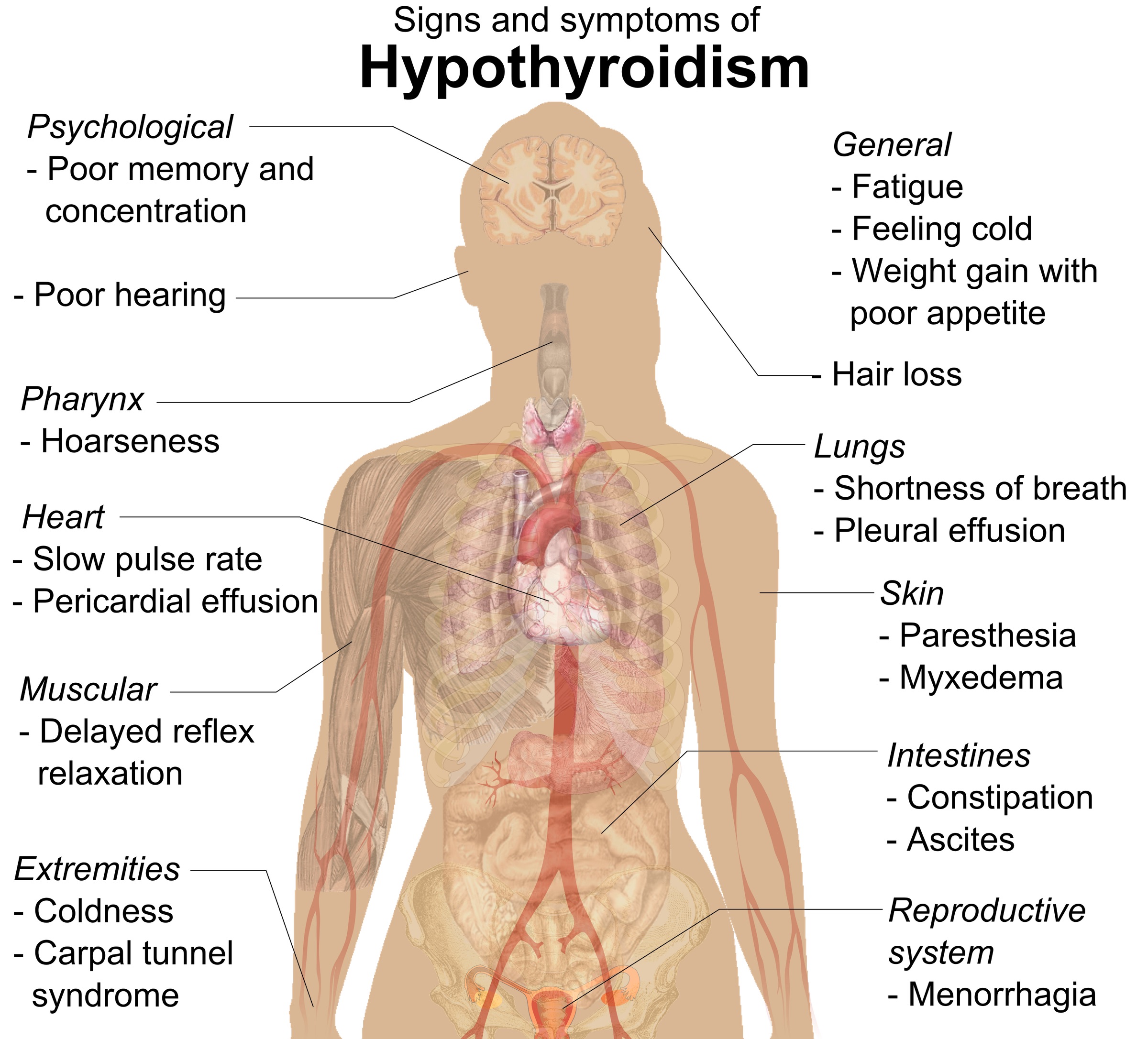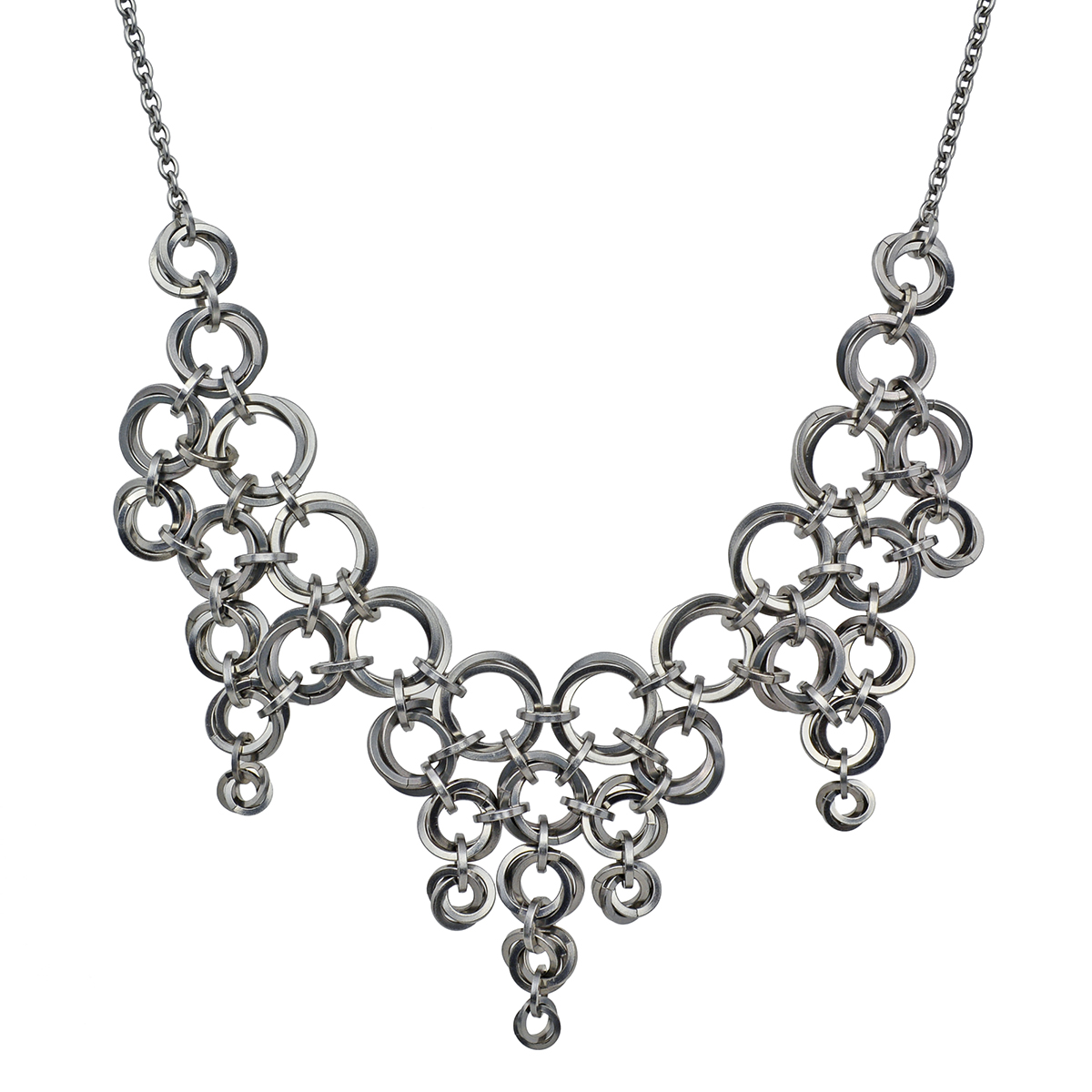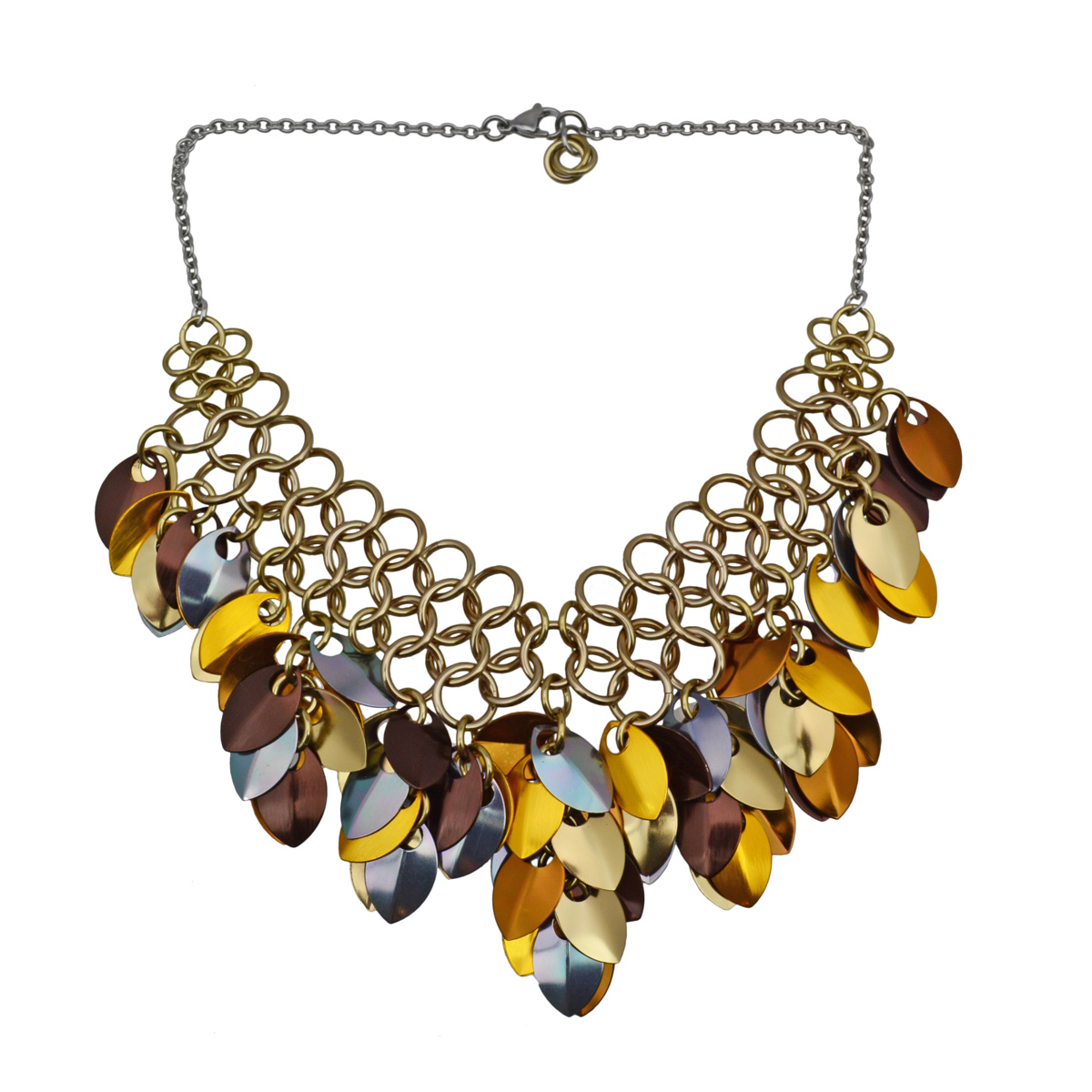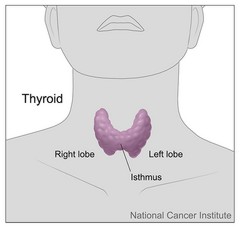Hashimoto’s Disease Made Me Tired, Depressed, Sore, Foggy Headed, And Worst Of All, Unable To Find Joy In My Art
Disclosure: Some of the links to products below are affiliate links, meaning, at no cost to you, I may earn a commission if you click through and make a purchase. It helps me create content like this for you, and I thank you for your support.

 For artists, “being creative” is central to our identity. Losing that creativity can feel devastating; it really is an identity crisis. In my case, it wasn’t until I became ill, and then started to heal, that I realized my symptoms had stealthily hijacked my creativity.
For artists, “being creative” is central to our identity. Losing that creativity can feel devastating; it really is an identity crisis. In my case, it wasn’t until I became ill, and then started to heal, that I realized my symptoms had stealthily hijacked my creativity.
January is National Thyroid Awareness Month and I want to take this opportunity to share my story with you. When researching Hashimoto’s, I found so many articles about body shape and energy levels and diet and hormones and many, many other topics. But I had difficulty finding personal stories about how it affects a creative person. I wrestled for a long time with posting my story before finally concluding that if my experience could help even just one person, it would be worth it.
I’m not a doctor, and I’m certainly not offering medical advice or solutions. (Frankly, I don’t have even half of everything figured out myself!) I’m simply sharing my story with the hopes that it can be insightful or inspirational to other creatives. Feel free to reach out via email or leave a comment below if you have any questions or just want to connect and say, “Hey, me too!”
If there’s interest, I’ll consider interviewing other artists/makers with chronic illnesses who are willing to share their experiences and how they keep their creative juices flowing. Especially with autoimmune conditions on the rise, I think more awareness, community and normalization could be beneficial to all.
In The Beginning
It’s hard to pinpoint when I realized that something was “wrong.” I think it’s like that analogy of the frog in a pot of water that slowly begins to boil: it happens so gradually the little guy doesn’t realize the water is getting hotter and hotter and then all of a sudden, he’s an item on a French menu.
I remember I needed naps almost on a daily basis. At the time, I’d written it off as my body being tired due to pushing myself so hard at the gym. Similarly, I’d often wake up with a very ache-y body, and I attributed it to powerlifting soreness. I bore my muscle aches with a sense of pride, as proof of my dedication to my athletic activities.
Sometimes the aches reminded me of how I’d feel just before I got the flu: my body felt weak and tender and it required great effort and concentration to lift things and move myself around. Occasionally, my mind would feel exhausted too; it was almost as if I was out of my body and just watching myself go about my tasks, moving slowly, as if through water. (I’ve since learned this is called “brain fog.” Makes sense!) Whenever I’d have days like this, I’d assume I was fighting off a cold or the flu, so I’d rest and do all sorts of preventative measures … and lo and behold, the cold or flu wouldn’t ever come to be! I’d be so proud, thinking my body had fought off a nasty bug!
Over the span of several months, I’d purposely gained weight in order to put on muscle, but when I went to lose the fat, I just couldn’t. I’d done this cycle of “bulking and cutting” several times, so it seemed odd that what worked for me before, wasn’t doing anything now. I didn’t understand how I could be eating in a caloric deficit and not losing weight, but I wrote it off as, “Oh, I guess now that I’m in my 40s, my metabolism has slowed down!”
But what I couldn’t just write off was the fact that I’d lost passion for my craft. I’ve been making chainmaille jewelry since 2002 and always thought it would be part of my life. But now, even though part of me wanted to make chainmaille, I was utterly de-motivated to do so. I remember telling my sweetie, “You know, I think I might be depressed,” not because I felt sad, but because I felt apathy, which I know can indicate depression. I wondered if I was still feeling weighed down from closing down my business in Chicago, and the stressful years that preceded it. Was I still burnt out, a year and a half later?
It wasn’t just that I wasn’t interested in chainmaille, I wasn’t interested in any creative endeavors. I found myself not wanting to dance, nor create music, nor write, nor make art—all things which I thoroughly enjoyed doing for my entire life. For my job, I was working on a kid’s craft project and maintaining my crafts supplies business, but it was a real struggle to do anything creative on either front. And beyond my jobs, I had zero creative mojo.
Before this time period, I was used to having SO many ideas, even if I wrote half of them down, I still would have far more projects in my queue than I’d ever have time to tackle. I’d see weaves and patterns when I closed my eyes to go to sleep. My brain would involuntarily see chainmaille structures underlying nearly every object around me, and a voice in my head would constantly ask, “Oooo, what if I made THAT out of chainmaille?” But now, the voice was eerily silent. I’d lost my spark and I couldn’t shake the feeling that I’d never make beautiful jewelry again.
I’ve always identified as a “creative” person, and now that I wasn’t being or feeling creative, it was as though I’d lost a core part of my identity. It felt very foreign and surreal and I wondered how to go about re-defining who I was.
The Diagnosis
Early in 2018, while trying to pinpoint the cause of unrelated chronic pain that plagued me for years, a blood test reveled that I have an autoimmune condition called Hashimoto’s thyroiditis (also known as chronic lymphocytic thyroiditis). With all autoimmune conditions, the body attacks itself. Different autoimmune disorders are defined based on which body parts are being attacked.
In the case of Hashimoto’s, the body produces antibodies to attack its own thyroid. Over time, usually many years, those attacks cause the thyroid function to decrease. This leads to a condition called hypothyroidism, which means that the thyroid gland can’t make enough thyroid hormone to keep the body running normally. In the US, Hashimoto’s is the leading cause of hypothyroidism (but note that not everyone who has Hashimoto’s develops hypothyroidism). There is no cure for Hashimoto’s, however, symptoms can usually be managed quite successfully. Medicine boosts your levels of thyroid hormones, allowing your body to operate as though your thyroid were functioning well. Diet, stress-reduction and other lifestyle changes can improve the autoimmune response, reducing inflammation and the production of antibodies so your body isn’t constantly trying to destroy itself.
Interesting fact: More than 120 million prescriptions were written in the USA for hypothyroidism medication in 2017 (making it the second-most prescribed medication in the country). Needless to say, if you aren’t taking thyroid medication yourself, there’s a very good chance you know multiple people who are.
So what’s the big deal with the thyroid? Well, thyroid hormones affect every cell and all the organs of the body. The thyroid gland, a butterfly-shaped organ located in the base of your neck, releases hormones into the bloodstream so the hormones can reach the body’s cells. These hormones control metabolism—the way your body uses energy. When thyroid hormone levels are too low, the body’s cells can’t get enough thyroid hormone and the body’s processes start slowing down. Common symptoms include: unexplained weight gain, feeling cold, fatigue, dry skin, constipation, forgetfulness/brain fog, and depression.
 All of a sudden a LOT of things made sense to me: All those naps I needed? The body aches? The inability for me to lose weight? These are all quite common for Hashi’s and hypothyroidism. My bloodwork indicated that my thyroid function was ever-so-slightly below normal, my inflammation markers were above normal, and I was producing both types of thyroid antibodies. Luckily, this was caught in the very early stages, before serious damage was done, and I could begin the healing process.
All of a sudden a LOT of things made sense to me: All those naps I needed? The body aches? The inability for me to lose weight? These are all quite common for Hashi’s and hypothyroidism. My bloodwork indicated that my thyroid function was ever-so-slightly below normal, my inflammation markers were above normal, and I was producing both types of thyroid antibodies. Luckily, this was caught in the very early stages, before serious damage was done, and I could begin the healing process.
Interestingly, even though I started looking back at the past 6-24 months and realizing how many things I could attribute to Hashi’s, I still hadn’t made a connection between my condition and my lack of creative energy just yet.
Getting My Spark Back
Two days after getting diagnosed, I immediately went cold turkey into a new lifestyle based around getting better. This primarily involved changes in diet and self-care. (I didn’t start medication until 3 months later, after another round of blood work.)
I was immediately sold on a diet change. For several years, I’d watched as a close friend managed Multiple Sclerosis through a regimen of diet, medication, exercise and meditation. The successful results she had, along with the scientific research she cited, convinced me that diet can be crucial to managing illness.
I’m not going to include too many details about my diet, because every person is different and what worked for me may not work for you. (And again, I’m not a medical expert!) Here’s the thing: the foods I had been eating weren’t necessarily unhealthy in and of themselves. But when I took a food sensitivity test, I discovered that I was sensitive to many of the foods I was regularly consuming in large quantities. Even though the foods weren’t bad, they were possibly bad for me, and could be exacerbating my body’s inflammation. I decided to eliminate everything I’d tested sensitive to. (Even though food sensitivity testing isn’t 100% accurate, I felt it would be a good place to start … and also, I’ll be real, there were some items I knew I was sensitive to years ago, but I just kept eating them anyway. Because: CHEESE!) I read that 50-80% of Hashi’s patients feel better by eliminating gluten, and both my doctor and my naturopath mentioned a gluten-free diet. Liking those odds, I decided to go gluten-free, even though I hadn’t tested sensitive to gluten. I cleared my fridge and pantry of all the verboten foods and stocked up with new veggies and proteins.
I was already exercising 4-6 days per week, mostly heavy weightlifting. I decided to keep my routine, but promised myself I’d pay better attention to how I was feeling and wouldn’t push myself on days when I felt too tired. It’s hard for someone with an athlete’s mentality to cut back, but I knew I needed to be careful. I started noting which workouts left me overly exhausted versus which ones gave me energy.
Finally, I started incorporating meditation back into my life. I’d gone through phases of meditating before, but had stopped meditating sometime after I moved out to California. I think I felt much less stress, and I probably assumed meditation was something I no longer needed. When in fact, the meditation was likely helping me keep my stress levels low!
Within several weeks, I had noticeably higher energy levels. I no longer needed to nap every day! I stopped having “brain fog” days. I was eating the same number of calories, but with my new foods that weren’t contributing to inflammation, I slowly started to lose the excess weight. My extremities often still felt cold, but well, I’ve been cold my whole life, so maybe that’s just here to stay. 😉
 Importantly, though, I had the urge to create again! Slowly but surely, my brain felt like it was “firing” again and within a few months, my brain was flooded with the familiar sensation of nonstop ideas. I wanted to sit at my craft table and weave for hours. It was electrifying.
Importantly, though, I had the urge to create again! Slowly but surely, my brain felt like it was “firing” again and within a few months, my brain was flooded with the familiar sensation of nonstop ideas. I wanted to sit at my craft table and weave for hours. It was electrifying.
It was now, finally, that I looked back and realized how slowly and subtly this condition had taken over my life. It wasn’t some acute injury that is obvious. Instead, it happened so gradually that I kept writing off the symptoms, convincing myself it wasn’t really anything. It is not surprising to me that so many Hashi’s patients are misdiagnosed with depression. (Well, let me clarify: depression can be a symptom of Hashi’s/hypothyroidism, but it is not the root cause. Simply treating depression in this case doesn’t solve the problem.)
What comes Next
So, what’s next now that I have my energy and passion back? Well, first off, self-care is now my number one priority. Autoimmune conditions often travel in packs, and it is quite common for patients to have multiple disorders. So I am taking care of my body and trying to fuel it with proper nutrition, medicine, exercise, and pampering in order to feel as well as I can now and to put myself in the best possible position to manage anything that may come up. Sometimes life happens and I don’t adhere to my diet for a few days, and I wind up having a flare-up (body aches, brain fog, exhaustion). I forgive myself, thank my body for everything it is doing for me, and get right back into my routine.
I’m still keeping up the Blue Buddha Boutique Etsy shop, but I have decided to focus my energies on developing my own jewelry line. Ever since the early days of my business, my jewelry took a back seat to my other endeavors—running the chainmaille supplies business, writing a book, teaching, developing a line of craft kits for kids. Other than a few years back in 2003-2007, I wasn’t focused on promoting my jewelry and I’d always lamented the fact I kept putting my designs on the back burner.
 Having lost my creativity made me realize how special and valuable it is to me. This is my chance to give it my all. In the past half year, I finally put together a wholesale catalog and was accepted to vend on Faire. I created an Instagram page for Rebeca Mojica Jewelry and relaunched my jewelry website. I started working on new designs and challenged myself to weave a quilt square in 7 days. I participated in my first art fair in years, and am looking forward to applying to more shows in 2019.
Having lost my creativity made me realize how special and valuable it is to me. This is my chance to give it my all. In the past half year, I finally put together a wholesale catalog and was accepted to vend on Faire. I created an Instagram page for Rebeca Mojica Jewelry and relaunched my jewelry website. I started working on new designs and challenged myself to weave a quilt square in 7 days. I participated in my first art fair in years, and am looking forward to applying to more shows in 2019.
I’m grateful to have a wonderful support system of friends, doctors and fellow crafters throughout this journey. Let’s just say I “took the scenic route” the last few years—and I’m sure I’ll find myself meandering down the scenic route again! This scenic route reminded me that many, many people deal with invisible illnesses, and it’s always good to treat all people with compassion, especially strangers. This journey has also caused me to finally embrace self-care in a profoundly deep way, and to feel good, not guilty, when I set boundaries and make time for myself.
It’s amazing to feel like me again, and I am excited about what the future holds!
Resources
Due to my other chronic pain issues, I had already started reading ChronicBabe 101: How to Craft an Incredible Life Beyond Illness by Jenni Grover before I was even diagnosed with Hashi’s. Jenni is a friend who created the Chronic Babe community back in 2005 to help sick chicks all over the world “ROCK their lives.” Her book was immensely helpful to me as I struggled with undiagnosed pain (sidenote: the pain has since been diagnosed and treated!) and the book was even more helpful after I learned I had an autoimmune condition. I can’t recommend this book and her educational resources enough. She’s my #1 Chronic Babe!
The American Thyroid Association has a wealth of information on hypothyroidism, Hashimoto’s and other thyroid disorders.
ThyroidAwareness.com is another website with a ton of information about thyroid issues.
The National Academy of Hypothyroidism has an informational page to help spread awareness of hypothyroidism, along with many other resources on their website.
Find out more about the thyroid gland on EndocrineWeb.

 I wish you a very happy and healthy year as well.
I wish you a very happy and healthy year as well.


I work at a doctor’s office and we have taken almost all of our patients off pain pills and put them on CBD oils, pills or gummy bears, it’s amazing how much this has helped so many people, they have made it into creams for children who have seizures, so when a child is having a really bad one you put the cream on the back of their neck and it will stop the seizure. It’s all natural, you don’t get high from using it, you don’t test dirty for UA test at work. Just another little tip for those in pain who don’t want to get hooked on pain pills and who want to go out and live their life, who refused to let pain steal their joy!! I am so happy you found your JOY it’s so nice to have you back creating and having fun with your art again, I just did 2 of your kits with my granddaughter this past weekend who is 9 yrs old, she had a ball and she saw your picture and said Grandma she’s so cute, I said yes she is let me tell you about her, so now she knows all my pretty jump rings have come from you and I do have lots. Thank you for always up lifting us with your art and sweet words, I wish you a very healthy year and many Blessings, We love you and your pretty hair (from my granddaughter Brooklyn) Many Hugs Linda Evans